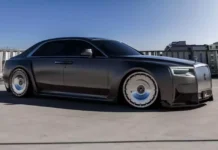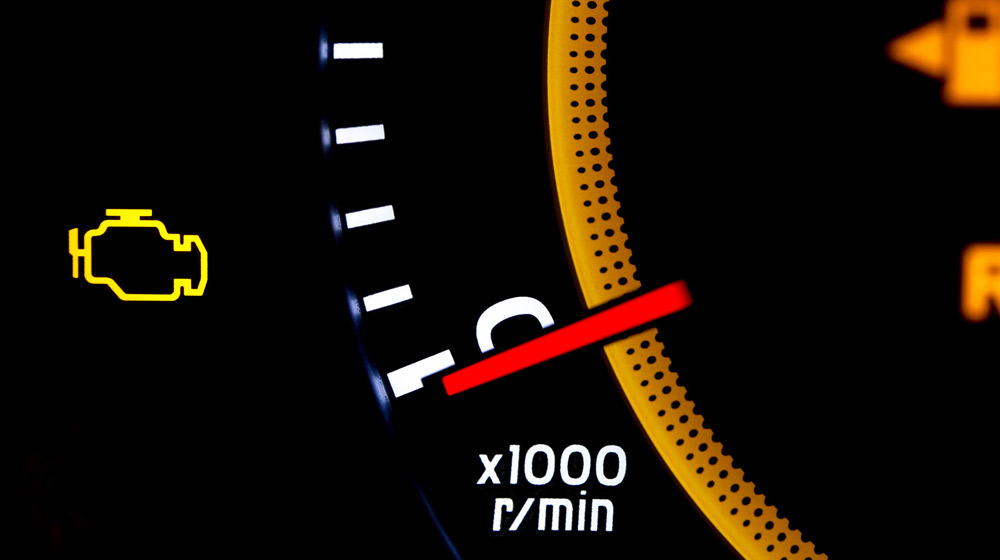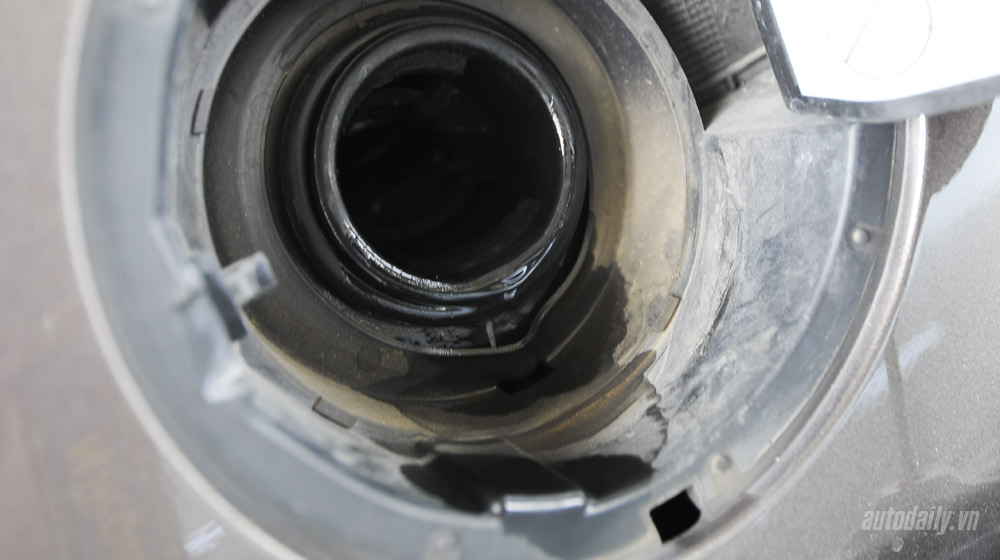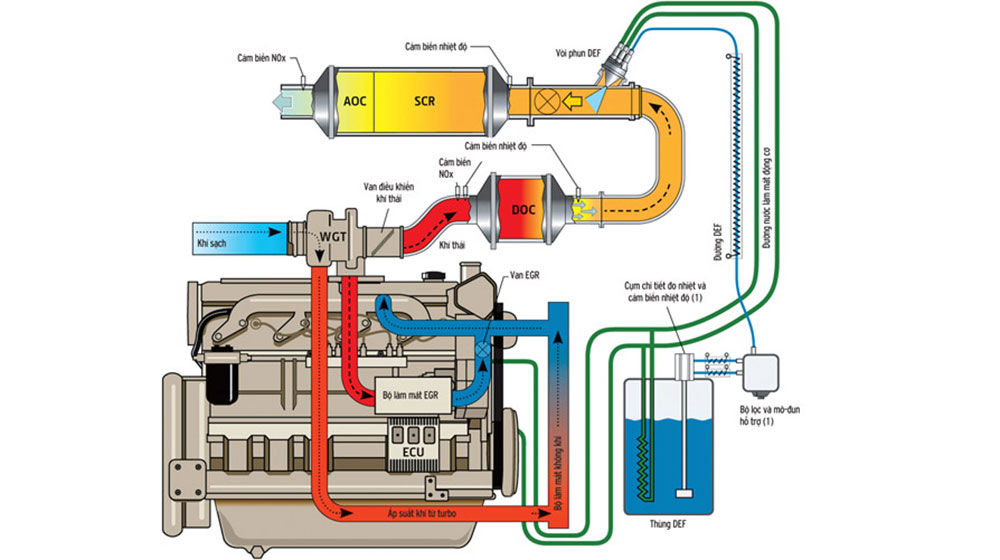Below, you will find 10 common malfunctions that can cause your check engine light to turn on. By understanding these issues, you can diagnose the problem and prepare financially for any necessary car repairs.
1. Malfunctioning oxygen sensor
The most common cause for the check engine light to turn on is a malfunctioning oxygen sensor. This can be a result of poor previous repair work or using low-quality gasoline, particularly ethanol-blended gasoline that exceeds the standard concentration.
The oxygen sensor provides data to the engine control unit (ECU) to determine the air-fuel mixture ratio from the exhaust gas, specifically the Exhaust Gas Recirculation (EGR) system mentioned in number 9, and air. A faulty sensor can decrease engine power, increase fuel consumption by up to 40%, and increase nitrogen oxide emissions in the exhaust gas.
2. Missing fuel cap
The second most common cause for the check engine light to turn on is a missing fuel cap. This cause has decreased to 7.21% compared to 9.28% two years ago.
3. Catalytic converter
The third most common malfunction is a faulty catalytic converter. This device looks like a muffler and contains rare metals such as platinum, rhodium, or palladium, which act as catalysts for the combustion of excess gasoline and CO into water vapor and less harmful CO2. A faulty catalytic converter is often the result of a weak ignition system that prevents complete fuel combustion.
4. Faulty ignition coil
The ignition coil, also known as the spark coil, provides high voltage to the spark plugs in order to create an electric spark. A hot engine can weaken or damage the ignition coil.
A faulty ignition coil can prevent the engine from starting. If the ignition coil is weak, the engine will consume more fuel and may lead to a malfunctioning catalytic converter, as mentioned above.
5. Spark plugs, ignition wires, and spark plug connectors
Spark plugs, ignition wires, and spark plug connectors can also cause the check engine light to turn on. If the ignition system issue is not fixed, it will increase fuel consumption and, worse, lead to a malfunctioning catalytic converter.
6. Mass airflow sensor (MAF)
The Mass Airflow (MAF) sensor helps calculate the amount of airflow into the engine and the corresponding fuel injection. If it is faulty, you may have to spend an additional 10 to 25% on fuel.
7. Incorrect installation of alarm devices
If you want to install an alarm device, it is recommended to decide before purchasing the car and have the authorized dealer install the appropriate type. Installing an incompatible alarm device yourself can cause issues with your car’s existing devices.
8. Evaporative emission control system (EVAP)
When people think of air pollution caused by cars, they often think of exhaust gases coming out of the tailpipe. However, few people know that gasoline vapor can also escape from the fuel tank and fuel line system, causing damage to the environment. Gasoline vapor contains up to 150 chemicals, including highly toxic substances such as toluene, benzene, and sometimes lead.
In older cars, the fuel cap has a small hole for air to enter the tank as the fuel is consumed by the engine. Without this hole, fuel cannot flow into the engine. However, when the engine is turned off, gasoline vapor can escape through this hole and contribute to air pollution.
To prevent gasoline vapor from escaping into the environment, the Environmental Protection Agency (EPA) has required cars to be equipped with an Evaporative Emission Control System (EVAP) since 1970. This system collects and treats gasoline vapor before it evaporates into the atmosphere.
If this system is faulty, the check engine light will also turn on.
9. Replacing the Exhaust Gas Recirculation (EGR) system and cleaning the exhaust pipe
The atmosphere contains 21% oxygen and 78% nitrogen, creating oxygen-rich air. When fuel is mixed with oxygen-rich air and burned at temperatures above 1,500 degrees Celsius, it produces nitrogen oxide (NOx), a harmful gas. To reduce the NOx levels in exhaust gas and comply with European and American standards, car manufacturers supply the combustion chamber with oxygen-poor air (lower than 21%) by using the Exhaust Gas Recirculation (EGR) device to recover a portion of the exhaust gas (nitrogen, CO2, and water vapor). This gas is cooled before being mixed with atmospheric air.
If the EGR system is faulty or the exhaust pipe is clogged, the check engine light will turn on.
10. Faulty battery and charging parts
A faulty battery is often a result of age, engine overheating, or hot weather conditions. These factors can have an impact on the battery’s life and performance.
Anh Duc (Translator)
19-Year-Old Chooses BMW E36 Over Clothes: Spending Money on Fuel and Car Repairs
The BMW E36 gracefully cruises by, harmoniously blending the melodic hum of its inline six-cylinder engine with the nostalgic melody of shifting gears. Emerging from the driver’s seat is not a weathered old man with a distinguished and robust presence, nor a prosperous tycoon leisurely enjoying his cherished fleet of automobiles on a weekend escapade…
















































![[CAR REVIEW] Volvo XC60 Ultimate Recharge: “The Car of the Year 2022” – Is it deserving?](https://vnauto.net/wp-content/uploads/2023/11/xehay-volvoxc60recharge-28042023-23-100x70.jpg)